![]()
When I received an invitation from the University of Balochistan informing me that five of our engineering projects had been accepted for the first Invention to Innovation Summit – the first comment my director made was,
“Umair, do you know the halaat (conditions) in Quetta? Taking students there can be risky!”
[caption id="" align="alignnone" width="696"]
![]()
The 1st Invention to Innovation Summit in Quetta[/caption]
It wasn’t easy trying to make him understand that all universities from Sindh and Balochistan were participating; hence it was mandatory for us to attend. However, we were finally able to convince him.
There were nine of us, out of which seven were visiting Quetta for the first time. Ultimately, this resulted in a
fear of the unknown, mixed with a desire to meet new people. However, what we witnessed during our three days there totally changed
our perspective of Quetta.
[caption id="" align="alignnone" width="696"]
![]()
What we witnessed in those three days totally changed our perspective of Quetta.[/caption]
We reached Quetta early in the morning, and a local student’s father greeted us at the bus stand. He arranged for our transport to the hotel, which was near Liaquat bazaar. Once we reached our hotel, we freshened up and made our way to the
University of Balochistan.
On our way to the University, the first thing we noticed about Quetta was the fact that it was built between mountains. The second thing we noticed was that
Frontier Corps (FC) troops were stationed on every road. Even though the large presence of Law Enforcement Agents (LEA) painted a
grim picture of the city’s security, it created a sense of safety and decreased the possibility of threats.
Upon reaching the University, we unpacked our projects, set up our booth and were ready to present.
The first thing that used to come to mind when I thought of Balochistan was the
backwardness of the community and its people. However, much to my surprise, the University of Balochistan is just as lively as the University of Karachi. The students, their political parties, and faculty are of the same calibre.
I noticed that the students of Karachi and Balochistan were visibly different in terms of physique. I am a slim person, and I couldn’t find anyone that even remotely resembled my physique. The students proudly wore their kameez with
ghair wali shalwar (flowy shalwar). A person can deduce the stature of the other through their style, which was what we did.
I was also amazed to see many students wearing
Sindhi topis. Upon further inquiry, I discovered that there is a very small difference between Sindhi, Pakhtun and Balochi topis. For mere laymen like my team, we were completely unqualified to determine the difference.
I almost missed the turban which I thought was related to the Pakhtun or Baloch culture. It is in fact a modified version of the Sindhi topi, which is worn in Quetta by Balochis and Pakhtuns.
Various female students on campus also had a unique style of dressing; they covered their face with their dupattas, but had exceptionally decorated their eyes, so much so that one couldn’t help but glance at them.
The common perception about females in this province is that they are very religious, cover their faces and have strict segregation rules. Though this does not stem from religious ideas, rather it seemed to be a matter of Baloch or Pakhtun customs. I only came across a handful of female students in
abayas.
Before getting on the bus to Quetta, I had called one of my former students, who belonged to Quetta, hoping to meet up with him. Unfortunately he was in Lahore at the time. Regardless, this is where my fascination with the people of Quetta began. My student insisted that I stay at his house, and he would arrange my transport along with everything else.
When we did reach Quetta, I received a phone call from a man who introduced himself as the chachu (paternal uncle) of my former student. He asked me if I had reached safely, inquired about my accommodation and insisted that I have dinner with him.
“Aap humaray mehmaan hain, baghair khana khaye aap nahi ja saktay”.
(You are our guest; you cannot leave without eating food).
[caption id="" align="alignnone" width="696"]
![]()
Much to my surprise, the University of Balochistan is just as lively as the University of Karachi.[/caption]
Another facet that I saw was the students’ awareness when it comes to politics. At a question and answer session, one student asked a tough question, and in response his fellow classmates applauded him. He asked,
“If the gold of Reko Diq and the natural gas of Sui could not change the life of a citizen of Balochistan, what can we expect from a road of China Pakistan Economic Corridor? Will it be dealt amongst the Nawabs, the Sardars, the politicians and the generals?”
Several other interesting questions were raised; however the answers from the government representatives were disappointing. It seemed, yet again, that the
Gwadar port of Balochistan might not change the fate of the ordinary people.
As the day came to an end, we packed up and were ready to head back to our hotel. But our plans changed as we had to drop a local student to her house on Alamdar road.
Alamdar Road was home to the Shia
Hazara community and housed an FC check post, who did not allow anyone inside the premises unless their ID cards were handed over. This security measure was implemented after a
recent bomb blast on the Hazara procession where hundreds of Hazara Shia’s were killed. The family members of the deceased refused to bury the deceased until proper security was provided to them.
All along the road, pictures of the deceased were displayed. I asked our Baloch driver about the mix of Shias and Sunnis in Quetta, and he categorically said that there are no Shias in Balochistan, there are no Shias in the Pakhtun area of Quetta and the Hazaras residing there are from Iran. This was also certified by the fact that there is an Iranian embassy in Quetta along with Afghan embassy. Quetta’s political importance can be understood by the fact that its reach is as far as Iran and Afghanistan.
The faculty was invited for a networking dinner at the Quetta Club, located in the Cantonment area (Cantt). I did not avail the pick and drop service organised for me and instead went around the city in a rickshaw before making heading towards dinner.
The roads in Quetta are very narrow and during rush hour all roads are usually jam packed. Another thing I noticed was the vast difference between the vehicles present at a given time – while some are on bikes and cycles, others are driving around in Land cruisers and Pajeros. This illustrates the large-scale disparity in wealth distribution and a dearth of middle class citizens in the region.
I asked the
rickshaw driver about the situation of Quetta and he said,
“It has gotten much better because of the FC’s strong presence, but it’s temporary.”
I was astounded that he did not take
advantage of me being a tourist and charged me an honest amount for the distance we had travelled. In cities like Lahore and Karachi, taxi/rickshaw drivers tend to rob you by overcharging, even if you’re a local.
He left me at the
Jinnah check post in the Cantt area and I walked the rest of the way. Only stickered rickshaws were allowed inside. I had suffered a toe injury so I walked rather slowly. It took me about two minutes
to get to the reception area.
I told them that I had to go to Quetta Club, but was informed that I was at the wrong check post; I needed to go to the China check post instead. The receptionist said that it was a 10 minute walk, but because I had an injured toe, I decided to take another rickshaw to the next check post. I stopped another rickshaw who quoted Rs30 for the short ride. I had a Rs1,000 note and neither of us had any change. It was around 10pm at night so there weren’t many rickshaws coming my way either. I made the obvious decision and started limping ahead. The rickshaw driver saw me and said,
“Aap ko waisay hi choor deta hun, aap humaray Karachi kay mehmaan hain.”
(You are our guest from Karachi; I’ll drop you free of cost).
He dropped me at the check post without taking any money. My admiration for the people of Quetta tripled after this. In Lahore, just mentioning that you are visiting from Karachi can get you into trouble, however in Quetta, you are treated with respect.
During dinner at the Quetta Club, I met the main organiser of the event, Dr Waheed, who was a friend of the Head of Department of Electrical Engineering Program at our University. He was extremely happy to hear that someone from Karachi had participated.
In the closing ceremony of the second day, with an auditorium filled with students and teachers of various universities of Balochistan, coupled with industrialists, Dr Waheed specially thanked us for coming
from Karachi, and gave us a special shield for participating in the summit.
During the networking dinner, I came across a Physics professor from the University of Balochistan, who happened to be a classmate of our head of department during his PhD studies. He too was thrilled to hear that we were from Karachi and took me in his own car to drop me to the hotel, even though it was quite far from his own house. I was continuously impressed by the hospitality of these people.
I came back at around midnight and sat with my students for a cup of tea while sharing my experience. They had similar stories to tell as they, too, had been roaming around in the bazaar and exploring Quetta. They said that their attire made it obvious to the shop keepers that they were from Karachi, and kept insisting that we have a cup of tea with them. They also spoke of the instance where they were finding this particular, popular place to eat and asked a policeman for directions – who was kind enough to offer taking them there in his van.
The next day, we were better organised. We reached the university early, set up our booth and impressed many with our engineering projects. I also visited other booths which were set up by other engineering universities like Mehran University, University of Khuzdar, and
University of Turbat. Along with The Balochistan University of Information Technology, Engineering and Management Sciences (BUITEMS), we displayed our electrical related projects.
We had our event that evening, so I politely asked my former students uncle to meet for lunch the next day instead. I was overwhelmed by the hospitality that almost everyone from the region exuded. Later, my student’s uncle visited the University of Balochistan, and brought Kabuli Pulao (a famous rice dish in Quetta) with him along with a packet of dry fruit. He kept insisting on taking us all out for dinner, but we had already accepted another dinner invitation.
The first day was busy; there were various sessions organised and one of the sessions that I attended was of personal interest to me; it was about the CPEC and its effects on Balochistan.
[caption id="" align="alignnone" width="696"]
![]()
We reached the university early, set up our booth and impressed many with our engineering projects[/caption]
Various myths about Balochistan had been completely debunked in one day. When I visited the projects displayed by BUITEMS, I was astonished by their effort and their level of skill. I had assumed that they would be of a lower calibre or have lower technological standards than our projects, but I can safely claim that their projects levelled, if not surpassed ours.
I heard that
BUITEMS has made a serious mark in the technological front and I finally witnessed their achievements. When I asked about the secret to their success, someone remarked that admissions are purely based on merit, and even the son of a governor would be denied admission at the institution if he did not meet their criteria.
During the exhibition of our projects, a bunch of jolly Psychology students came to our stall. We were dressed in pants and shirts – hence were standing out. They tried to understand the engineering projects but eventually gave up and offered us tea, and once again, made the friendly request which was,
“Aap humaray mehmaan hain.. jaanay say pehlay humaray saath chai zaroor peeni hay aap nay.”
(You are our guest; you have to have tea with us before you leave).
I couldn’t say no, and we went out to have tea. I asked them if they had ever visited Karachi and they said they have and stayed in Lyari. Another student from Khuzdar University who was staying in the same hotel as us was also from Lyari, and I found that generally the Baloch from Quetta hold strong connections to Karachi via Lyari, while Pakhtuns hold strong connections from Al Asif and Kati Pahari.
Another group of students came and one of them gave me his cell phone number and said,
“Kissi bhi qisim main Quetta main zaroorat ho ya pareshani ho aap humain call karna.”
(If you ever need anything or need any help in Quetta, please call me).
We already had the Kabuli pulao for lunch with my former student’s chachu, and the organisers gave us coupons for three biryanis. When the students went to the counter to get the three biryanis, they complained that there are nine people from Karachi. Without any hesitation, the man working at the counter put aside all his calculations, took out nine biryanis and said,
“Aap humaray mehman hain, kam hojayay to batayayiyeaga.”
(You are our guest, if these run out, let me know).
The summit came to an end in the evening and we returned to our hotel. Another student’s father, who had worked here, had arranged a van for us through his friend so we could go to Labelli, a restaurant just outside Quetta.
Being a Karachiite, I have tried sajji at many different places in Karachi but never really liked the dish. But when one tastes the sajji in Quetta, they will forget the sajji of Karachi!
Another interesting aspect of Quetta was the elegant display of roses, not just in the university, but all over the city as well. I don’t know why Quetta isn’t famous for its variety of roses because, for us, they were the most unique feature of Quetta.
[caption id="" align="alignnone" width="696"]
![]()
The roses were the most unique feature of Quetta that we had witnessed[/caption]
On the third day we decided to visit
Ziarat. We went out early in the morning; the father of a local student came with us. Her mother had been kind enough to prepare some delicious
chicken karhai and kebabs to eat there.
Ziarat is about three hours from Quetta, but those three hours were filled with breath-taking sights. The first thing you notice are the mountains, which are initially very far, but as you keep driving towards Ziarat, they get closer and closer. The landscape is exceptionally beautiful. My students, selfie-maniacs, stopped the car at several points to take pictures.
[caption id="" align="alignnone" width="696"]
![]()
The landscape is exceptionally beautiful[/caption]
Upon reaching Ziarat, which is enclosed by mountains, we went to the Quaid-e-Azam residency which has been refurbished. It was selected as a health resort by the British in 1891 and they earned around Rs38,000 in one year by promoting tourism in this
beautiful place.
I fail to understand why tourism isn’t being developed in such a beautiful place. There are hundreds of spots in Ziarat which can easily attract domestic and
international tourism if proper guest houses, resorts, camping trips and basic mountain climbing facilities are set up.
The name Ziarat was given to this area because of the Mazar (mausoleum) of Mulla Tahir, also known as Baba Kharwari.
Hanna Lake, present in Ziarat, is also an exceptional spot for tourism; however it is not being exploited for commercial use either.
After the adventurous experience, we returned to the bus stand from where we had to head back to Karachi. Our visit had truly changed our views of Quetta and its exceptional people, along with the beauty of its nearby areas.
It is our governing bodies’ political mistake that has given it a negative reputation and created havoc in such a rich and cultural society.
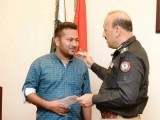

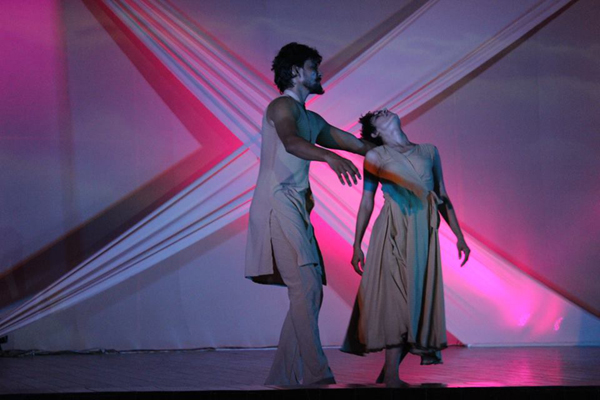 Photo: Facebook[/caption]
Directed by
Photo: Facebook[/caption]
Directed by 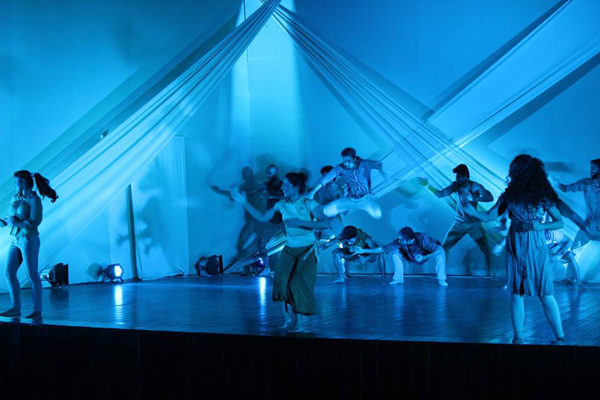 Photo: Facebook[/caption]
Love Letter to Karachi showcases a multidimensional view of Karachi – from the misleading nature of some of its citizens, to the love and support many share for their community – the play goes far in illustrating the layered truths of our diverse city.
The play also highlights how the media controls the mindset of commoners and how day to day problems (for instance the
Photo: Facebook[/caption]
Love Letter to Karachi showcases a multidimensional view of Karachi – from the misleading nature of some of its citizens, to the love and support many share for their community – the play goes far in illustrating the layered truths of our diverse city.
The play also highlights how the media controls the mindset of commoners and how day to day problems (for instance the 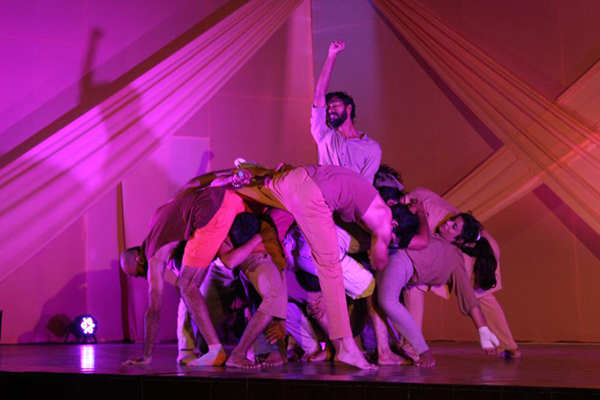 Photo: Facebook[/caption]
A special shout-out to the choreography, execution, music and lighting; it makes this stage play worthwhile. It’s classy, artsy and oozes relevance. All the cast members are extremely impressive in their respective roles. Kudos to Shankar and Chagger for displaying such a realistic visual extravaganza for Karachi and
Photo: Facebook[/caption]
A special shout-out to the choreography, execution, music and lighting; it makes this stage play worthwhile. It’s classy, artsy and oozes relevance. All the cast members are extremely impressive in their respective roles. Kudos to Shankar and Chagger for displaying such a realistic visual extravaganza for Karachi and 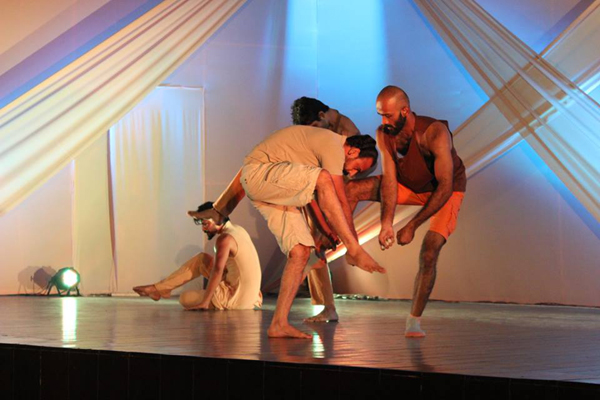 Photo: Facebook[/caption]
The show is on till
Photo: Facebook[/caption]
The show is on till 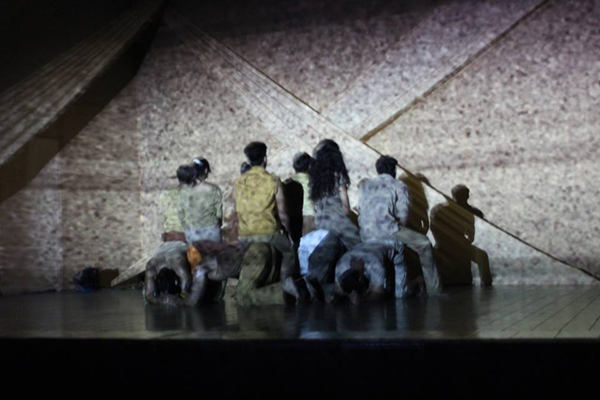 Photo: Facebook[/caption]
Photo: Facebook[/caption]
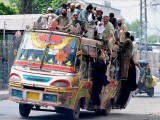



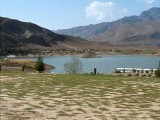
 The 1st Invention to Innovation Summit in Quetta[/caption]
It wasn’t easy trying to make him understand that all universities from Sindh and Balochistan were participating; hence it was mandatory for us to attend. However, we were finally able to convince him.
There were nine of us, out of which seven were visiting Quetta for the first time. Ultimately, this resulted in a
The 1st Invention to Innovation Summit in Quetta[/caption]
It wasn’t easy trying to make him understand that all universities from Sindh and Balochistan were participating; hence it was mandatory for us to attend. However, we were finally able to convince him.
There were nine of us, out of which seven were visiting Quetta for the first time. Ultimately, this resulted in a  What we witnessed in those three days totally changed our perspective of Quetta.[/caption]
We reached Quetta early in the morning, and a local student’s father greeted us at the bus stand. He arranged for our transport to the hotel, which was near Liaquat bazaar. Once we reached our hotel, we freshened up and made our way to the
What we witnessed in those three days totally changed our perspective of Quetta.[/caption]
We reached Quetta early in the morning, and a local student’s father greeted us at the bus stand. He arranged for our transport to the hotel, which was near Liaquat bazaar. Once we reached our hotel, we freshened up and made our way to the  Much to my surprise, the University of Balochistan is just as lively as the University of Karachi.[/caption]
Another facet that I saw was the students’ awareness when it comes to politics. At a question and answer session, one student asked a tough question, and in response his fellow classmates applauded him. He asked,
Much to my surprise, the University of Balochistan is just as lively as the University of Karachi.[/caption]
Another facet that I saw was the students’ awareness when it comes to politics. At a question and answer session, one student asked a tough question, and in response his fellow classmates applauded him. He asked,
 We reached the university early, set up our booth and impressed many with our engineering projects[/caption]
Various myths about Balochistan had been completely debunked in one day. When I visited the projects displayed by BUITEMS, I was astonished by their effort and their level of skill. I had assumed that they would be of a lower calibre or have lower technological standards than our projects, but I can safely claim that their projects levelled, if not surpassed ours.
I heard that
We reached the university early, set up our booth and impressed many with our engineering projects[/caption]
Various myths about Balochistan had been completely debunked in one day. When I visited the projects displayed by BUITEMS, I was astonished by their effort and their level of skill. I had assumed that they would be of a lower calibre or have lower technological standards than our projects, but I can safely claim that their projects levelled, if not surpassed ours.
I heard that  The roses were the most unique feature of Quetta that we had witnessed[/caption]
On the third day we decided to visit
The roses were the most unique feature of Quetta that we had witnessed[/caption]
On the third day we decided to visit The landscape is exceptionally beautiful[/caption]
Upon reaching Ziarat, which is enclosed by mountains, we went to the Quaid-e-Azam residency which has been refurbished. It was selected as a health resort by the British in 1891 and they earned around Rs38,000 in one year by promoting tourism in this
The landscape is exceptionally beautiful[/caption]
Upon reaching Ziarat, which is enclosed by mountains, we went to the Quaid-e-Azam residency which has been refurbished. It was selected as a health resort by the British in 1891 and they earned around Rs38,000 in one year by promoting tourism in this 
 Umar Akmal celebrates his record-equalling century after pummelling Rawalpindi bowlers for nine sixes and as many fours. Photo: Shahid Saeed/ Express[/caption]
It is only when we will have cities or provinces playing each other that our tournaments can generate the sort of crowd interest in local matches as is witnessed in England and Australia. This is because region-based cricket inculcates within players and fans alike a feeling of affiliation and ownership in their teams, that is unmatched by
Umar Akmal celebrates his record-equalling century after pummelling Rawalpindi bowlers for nine sixes and as many fours. Photo: Shahid Saeed/ Express[/caption]
It is only when we will have cities or provinces playing each other that our tournaments can generate the sort of crowd interest in local matches as is witnessed in England and Australia. This is because region-based cricket inculcates within players and fans alike a feeling of affiliation and ownership in their teams, that is unmatched by  Lahores vs FATA.
Lahores vs FATA. The NSW Blues (pictured) will play a Sheffield Shield match. Photo: AAP[/caption]
We, on the other hand, depend entirely on natural talent. This did get us through till the 90s, but now, with the fast changing landscape of this sport, raw talent no longer cuts it; polishing has become essential, and that can only be achieved by a competitive national structure.
After we have taken the first step, the next would be the venue selection. Rather than holding tournaments at randomly selected cities, we should play at a ‘home and away’ basis, something we see in
The NSW Blues (pictured) will play a Sheffield Shield match. Photo: AAP[/caption]
We, on the other hand, depend entirely on natural talent. This did get us through till the 90s, but now, with the fast changing landscape of this sport, raw talent no longer cuts it; polishing has become essential, and that can only be achieved by a competitive national structure.
After we have taken the first step, the next would be the venue selection. Rather than holding tournaments at randomly selected cities, we should play at a ‘home and away’ basis, something we see in  Pakistan celebrate their win over England in fourth Test at Kia Oval, August 14, 2016. Photo: Reuters[/caption]
Pakistan celebrate their win over England in fourth Test at Kia Oval, August 14, 2016. Photo: Reuters[/caption]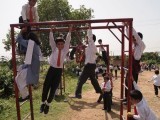






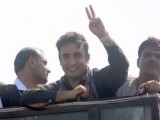
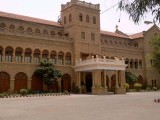
 What do I remember about my time at the school?
Well, obviously my friends. Many of us are still in touch with each other. When we meet we are the same happy-go-lucky, giggling teenagers we were at school. We are very comfortable in each other’s company in the way only childhood friends can be. There is no pretence, just the joy of being in each other’s company and I think St Joseph’s has a lot to do with that.
I’ve never forgotten the wonderful staff, both the nuns and others. Unlike the common impression people have of a convent education, the nuns who taught me could not have been kinder. That is not to say they weren’t strict. They were, but they were fair as well.
Teaching was what people would probably label as traditional. The photograph below dates back to the 1920’s but my classrooms were the same. Teachers stood at the front and we sat in rows facing the blackboard. There was homework and there were tests.
Miss Aileen Soares, our maths teacher (she completed 50 years of teaching in 2011!) used to start each lesson with a five minute test, the results of which would count towards the final grade. She would walk up and down the
What do I remember about my time at the school?
Well, obviously my friends. Many of us are still in touch with each other. When we meet we are the same happy-go-lucky, giggling teenagers we were at school. We are very comfortable in each other’s company in the way only childhood friends can be. There is no pretence, just the joy of being in each other’s company and I think St Joseph’s has a lot to do with that.
I’ve never forgotten the wonderful staff, both the nuns and others. Unlike the common impression people have of a convent education, the nuns who taught me could not have been kinder. That is not to say they weren’t strict. They were, but they were fair as well.
Teaching was what people would probably label as traditional. The photograph below dates back to the 1920’s but my classrooms were the same. Teachers stood at the front and we sat in rows facing the blackboard. There was homework and there were tests.
Miss Aileen Soares, our maths teacher (she completed 50 years of teaching in 2011!) used to start each lesson with a five minute test, the results of which would count towards the final grade. She would walk up and down the  Miss Soares[/caption]
[caption id="" align="alignnone" width="640"]
Miss Soares[/caption]
[caption id="" align="alignnone" width="640"] Classroom in 1920’s[/caption]
When Miss Soares would show us how to solve a problem, she would explain while writing on the board and when she finished she would start erasing it. You quickly learnt to pay attention in her lessons.
We were expected to have
Classroom in 1920’s[/caption]
When Miss Soares would show us how to solve a problem, she would explain while writing on the board and when she finished she would start erasing it. You quickly learnt to pay attention in her lessons.
We were expected to have  The narrow staircase.[/caption]
As far as the curriculum was concerned we studied
The narrow staircase.[/caption]
As far as the curriculum was concerned we studied  We were lucky enough to have a huge playing field.[/caption]
[caption id="" align="alignnone" width="600"]
We were lucky enough to have a huge playing field.[/caption]
[caption id="" align="alignnone" width="600"] My friends were Muslim, Catholic, Protestant, and Zoroastrian. Photo: Shamim Taufiq.[/caption]
This was a convent school in a Muslim country where everyone had
My friends were Muslim, Catholic, Protestant, and Zoroastrian. Photo: Shamim Taufiq.[/caption]
This was a convent school in a Muslim country where everyone had  Staff room.[/caption]
[caption id="" align="alignnone" width="600"]
Staff room.[/caption]
[caption id="" align="alignnone" width="600"] Left to right: Sister Zinia Pinto, Sister Francis Mary, Sister Cecilia Francis and Ms Aileen Soares.[/caption]
[caption id="" align="alignnone" width="600"]
Left to right: Sister Zinia Pinto, Sister Francis Mary, Sister Cecilia Francis and Ms Aileen Soares.[/caption]
[caption id="" align="alignnone" width="600"] Courtyard[/caption]
[caption id="" align="alignnone" width="600"]
Courtyard[/caption]
[caption id="" align="alignnone" width="600"] Corridors leading to classrooms.[/caption]
[caption id="" align="alignnone" width="600"]
Corridors leading to classrooms.[/caption]
[caption id="" align="alignnone" width="600"] Mrs Lobo, our Music teacher.[/caption]
[caption id="" align="alignnone" width="600"]
Mrs Lobo, our Music teacher.[/caption]
[caption id="" align="alignnone" width="600"] St. Joseph's Convent School.[/caption]
[caption id="" align="alignnone" width="456"]
St. Joseph's Convent School.[/caption]
[caption id="" align="alignnone" width="456"] The St.Joseph's school song.[/caption]
The St.Joseph's school song.[/caption]







 I recently came across a question posed to teachers on
I recently came across a question posed to teachers on 
 We often ignore the treasures that our southern region has to offer.[/caption]
Science has proven that there is a delicate balance between the wildlife and their habitat, climate change and humans; disturbing any one of these will have a negative impact on the other. From the snow leopard population, which is an indicator of the health of high altitude ecosystems, to turtles which serve as cleaners of our water bodies, all species play an important role in maintaining the environment. This natural network determines our own survival and quality of life and, therefore, it is important that we educate ourselves and take ownership of the environmental issues
We often ignore the treasures that our southern region has to offer.[/caption]
Science has proven that there is a delicate balance between the wildlife and their habitat, climate change and humans; disturbing any one of these will have a negative impact on the other. From the snow leopard population, which is an indicator of the health of high altitude ecosystems, to turtles which serve as cleaners of our water bodies, all species play an important role in maintaining the environment. This natural network determines our own survival and quality of life and, therefore, it is important that we educate ourselves and take ownership of the environmental issues  Turtles serve as cleaners of our water bodies.[/caption]
Recently, I was a part of an exposure trip (organised by
Turtles serve as cleaners of our water bodies.[/caption]
Recently, I was a part of an exposure trip (organised by  The light was not enough, as is to be expected at dusk.[/caption]
During the boat ride, Umair Shahid (North Indian Ocean Coordinator from WWF-Pakistan) briefed us on the important role that mangroves play in the ecosystem, the various species that exist in Pakistan and their current status. Mangrove plants mature in about five years and their wood is inherently resilient. The roots of these specialised plants grow above the ground and one hectare of mangrove plants can absorb 1.5 metric tonnes of carbon dioxide. One of their key roles is to act as the first defence mechanism against natural disasters like cyclones and storms. Furthermore, they act as soil binders and prevent the fast rate of soil erosion. As for their connection to marine life and the local fishing community; they provide nursery grounds for small fish species, crabs, and shrimps. One hectare of mangroves can support the growth of 500 kg of fish and 250 kg of shrimps. Mangroves are also a roosting ground for migratory birds.
Pakistan has the seventh largest mangrove forest in the world. We were home to eight sub-species, however, due to our ignorance,
The light was not enough, as is to be expected at dusk.[/caption]
During the boat ride, Umair Shahid (North Indian Ocean Coordinator from WWF-Pakistan) briefed us on the important role that mangroves play in the ecosystem, the various species that exist in Pakistan and their current status. Mangrove plants mature in about five years and their wood is inherently resilient. The roots of these specialised plants grow above the ground and one hectare of mangrove plants can absorb 1.5 metric tonnes of carbon dioxide. One of their key roles is to act as the first defence mechanism against natural disasters like cyclones and storms. Furthermore, they act as soil binders and prevent the fast rate of soil erosion. As for their connection to marine life and the local fishing community; they provide nursery grounds for small fish species, crabs, and shrimps. One hectare of mangroves can support the growth of 500 kg of fish and 250 kg of shrimps. Mangroves are also a roosting ground for migratory birds.
Pakistan has the seventh largest mangrove forest in the world. We were home to eight sub-species, however, due to our ignorance,  Pakistan is home to five different species of marine turtles.[/caption]
By the time we were done with dinner, the watchers informed us that two turtles had come to the beach and were in the process of digging pits to lay eggs. Pakistan is home to
Pakistan is home to five different species of marine turtles.[/caption]
By the time we were done with dinner, the watchers informed us that two turtles had come to the beach and were in the process of digging pits to lay eggs. Pakistan is home to  Two turtles had come to the beach and were in the process of digging pits to lay eggs[/caption]
The two turtles that came for nesting were approximately 50 and 65 years of age respectively, as suggested by WWF-Pakistan’s marine expert. During this stage of nesting, the turtles are not to be disturbed, even by the use of light or excessive noise. However, once they had settled in and began laying eggs, the group went across to Sandspit beach and observed them nesting and closing their pits with their flippers.
[caption id="" align="alignnone" width="600"]
Two turtles had come to the beach and were in the process of digging pits to lay eggs[/caption]
The two turtles that came for nesting were approximately 50 and 65 years of age respectively, as suggested by WWF-Pakistan’s marine expert. During this stage of nesting, the turtles are not to be disturbed, even by the use of light or excessive noise. However, once they had settled in and began laying eggs, the group went across to Sandspit beach and observed them nesting and closing their pits with their flippers.
[caption id="" align="alignnone" width="600"]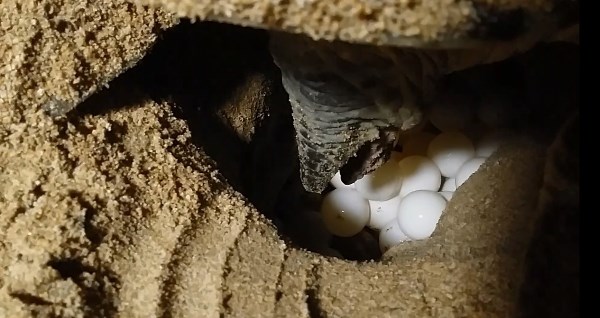 Once they settled in and began laying eggs, the group went across to Sandspit beach and observed them nesting and later on, closing their pits with their flippers.[/caption]
This visit was a unique experience. But when it comes to increasing your knowledge about the local ecosystem that lives close to a large metropolitan city like Karachi, it was just the tip of the iceberg. It left me realising how little I know about Karachi and how revolutionary this short visit really was in highlighting that. So next time you are planning a trip, do consider going for a turtle watch. Get in touch with
Once they settled in and began laying eggs, the group went across to Sandspit beach and observed them nesting and later on, closing their pits with their flippers.[/caption]
This visit was a unique experience. But when it comes to increasing your knowledge about the local ecosystem that lives close to a large metropolitan city like Karachi, it was just the tip of the iceberg. It left me realising how little I know about Karachi and how revolutionary this short visit really was in highlighting that. So next time you are planning a trip, do consider going for a turtle watch. Get in touch with 